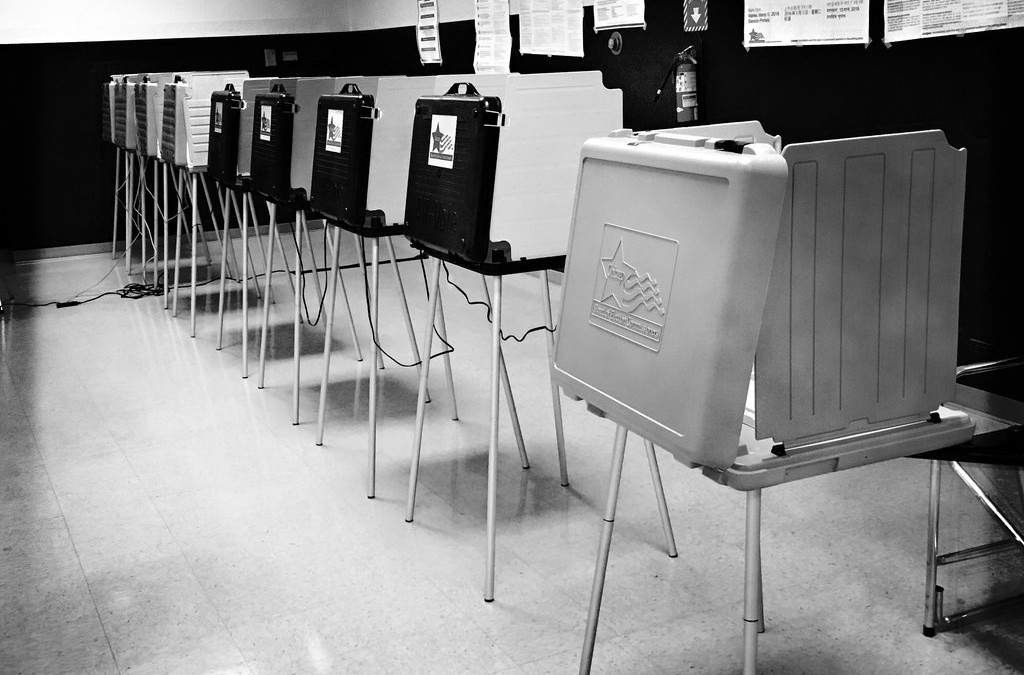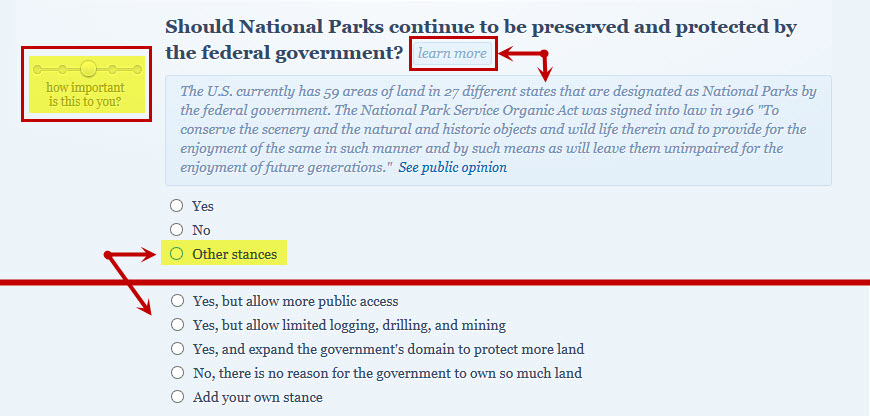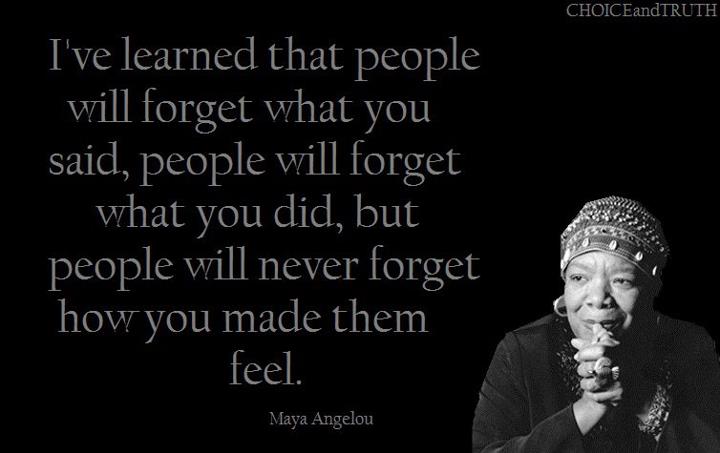
by Nicole | Mar 29, 2017 | News, Published, VINAZine
Gaslighting is a term that has gained traction in recent months (read: Teen Vogue’s poignant article on the subject). But the tactic has been around, plaguing its victims, for much, much longer.
Psychology Today says, “Gaslighting is a manipulation tactic used to gain power” by making the victim question their reality. It’s a form of slow brainwashing done by narcissists, as well as dictators or cult leaders, who often fall into this category themselves. Yikes!
As scary as the thought of someone brainwashing an entire nation is, gaslighting on a personal scale is also very real and can be just as scary for the victim. Gaslighting has even been dubbed a form of emotional abuse. There are several techniques a person can use when gaslighting someone. Some red flags:
The person is telling obvious lies. The reason? To make you unsure of yourself, what you know to be true, and question who you really trust. By lying to you, the person creates confusion and uncertainty in order to more easily manipulate you.
Denial. The perpetrator may try to convince you they never said or did something they blatantly said or did. This is just another way the person can get you to buy into a false, carefully calculated idea of what is going on around you.
Projection. If you are being told you are the one who possesses their flaws, this is called projection. For example, they’ve been known to cheat, but they then accuse you of cheating. They’re projecting their faults onto you to distract you from their own bad behavior.
They tell you you’re the crazy one. They might as well be trying to convince you the sky is green. If they are dismissive and say things like, “No one will believe you” when they act abusive or controlling, that’s a sure warning sign.
Now that we know how to spot it, how do we protect ourselves and our vinas from falling victim to gaslighting?
Trust your gut. Has your intuition ever failed you? Don’t let go of that strength – listen to it, and believe it.
Maintain your perception of reality. The sky isn’t green; you know it’s blue, so don’t back down. If you know something to be true, hold onto it.
Cultivate a strong support system. Don’t let the gaslighter isolate you from your friends and family. Surround yourself with people who are honest with you, who build you up, and who support you through life.
If you think you’re being victimized through this tactic of manipulation, don’t doubt yourself or what you know to be real. If you have any tips to share with our readers on how to stay strong and identify gaslighting before it can affect you or someone you love, please share in the comments!
This post was originally published on the VINAzine <3

by Nicole | Mar 4, 2017 | Beliefs, Life, News, Past Events, Politics, Published, VINAZine
On January 21, 2017 people around the globe came together to march in solidarity for women’s–and human, rights. It may have been initially organized to happen in Washington, D.C., but it soon became a collective phenomenon of cities around the world. Millions marched to make sure our collective voices were heard. And let me tell you- they most certainly were!
Why does the physical act of marching matter? Can it actually create change and awareness? Why yes, my darling vina, it absolutely can. Not only history, but psychology tells us so.
Kimerer LaMothe, Ph.D. recently shared an analysis on why the bodily action of marching matters, claiming, “To march is to move together in time.” LaMothe says that while we may not be moving at the same pace, a group of people moving together is “impossible to underestimate.”
LaMothe talks about “moving with others” in the sense that it creates an awareness and embodies democracy in its truest working form. She states that collective movement,“is about creating the conditions for generating ideas — a rich motley mix within which new visions may form. It is about generating networks of thought, feeling, and shared experience across which actions can travel.”
So why physically march with others? Simply put: to get us together – bodies, voices, and perspectives. To show support for each other align our goals: to keep moving forward. To realize we are not alone.
Moving together with others lights a fire and sparks motivation. Getting large groups of people together for a common purpose helps create a strong presence that can be seen and felt through passion and proximity. We are creating a community that builds us up, makes us strong, shows we’re loud and proud, and it’s undeniably engaging.
Coming together in large numbers like we saw during the Women’s March on Washington is motivating and inspiring. I mean, we’re still talking about it nearly two months later. That fact alone should help us realize that we can actually create change in our country and around the world, just by getting together to support each other and make our voices heard.
(Featured image courtesy Occupy.com)
This post was originally published on the VINAzine <3

by Nicole | Jan 17, 2016 | Education, News, Politics
We have officially entered the year of the next Presidential election in the United States. While I tend to keep my political thoughts to myself or only share with a small group of friends/colleagues, I feel it’s important to share some information with my friends, family, and readers.
If you aren’t sure of who you will vote for, that’s just fine – especially considering the field of candidates has yet to be narrowed down for the actual election later this year. If you’d like to get a head start and begin your research now, go for it. I highly recommend two websites to help you become a more informed voter: ISideWith.com and FactCheck.org
ISideWith.com is a wonderful resource, especially if you are very unsure of where you stand or which party/candidate you want to support. Don’t be sucked in by the evils of media; rather, take your time and answer the questions on this website. Their tagline – “How do your beliefs align with the potential candidates?” This is important… it focuses on YOUR beliefs.
My advice: be honest and answer the extra questions. It may take a little while, but it’s worth it. The last time I filled it out, I think it took about 30 minutes to complete with me answering each question in detail. Always select the position on the scale of if that issue is more or less important to you, and definitely expand the “Other Stances” option on each question to get more specific. Sometimes, a simple yes or no doesn’t suffice on the issues at hand. Here’s an example question:

Dissecting the features, there is a spot for the user to select how important that issue is to them. It’s a scale of Less to More, with Somewhat being the middle of the road. Next to the actual question, there’s a button for you to click to learn more about the issue, in case things aren’t immediately clear. That brief description will sometimes even offer why some are against and why others are for the particular issue. Below the Yes or No option, there’s another for Other Stances. Once you click that, more options appear, allowing you to get more specific about your personal belief on the issue. If you click Add your own stance you will be given a text box for you to type how you really feel. Note that your response in that area is added to the database and other users can see it when they browse through the website.
When you finish the quiz, you’ll be given a breakdown of who you side with, which party fits your views, and a ton of other features including how others in your location/demographic feel about the issues.
When I started the quiz, I thought (without a doubt) I’d be aligned with a certain candidate and party. At the end of the quiz, I was surprised to see my top candidate and party. Reading through my answers, it made a lot of sense. This is how we should begin making our voting decisions. Not only will you solidify your convictions, you’ll be able to find the person who aligns the most with your personal views. Then, you can make the decision if that person is indeed the best person to run our great nation. Keep going back too throughout the year to see if anything changes, especially when the candidates have been narrowed down. I will be visiting this site often over the next several months to ensure I vote with intelligence come November.
FactCheck.org is a fantastic resource that helps us cut out all the crap said in the heat of the moment or in an effort to earn a vote. I could give endless examples with this, but just consider the recent debates and statements some candidates are saying about each other. It’s a fact – some will say and do whatever it takes to get you to be on their side, regardless if it’s true or false. This unfortunately leaves it up to us to do more research to verify what is true or not. In the end, it at least makes us more informed.
I love this site simply because it is dedicated to presenting the facts and no party/candidate is safe. You can trust if something is said in error, this site will be quick to correct the inaccuracies and provide detailed information on the specific topic or issue. Their mission is to increase public knowledge through journalistic and scholarly principles. This site makes it easy for a citizen to find the truth among the mess that is modern politics. They have a great section titled “Viral Spiral.” This is dedicated to helping people sift through the rumors. If you’re on Twitter, go ahead and follow – no bias, no bullshit.
In closing: please do your research and don’t just blindly vote for a party. Don’t vote for someone because your parents or friends would. Get educated. Be informed. Take your time and really look into the potential candidates on your own. Don’t rely on media to tell you for whom you should cast your vote. Don’t let your friends and families tell you what you think. These two websites are just some of the few out there that will help you begin your research, help you form your own opinion, and then you will be able to be an informed voter. It’s your vote and yours alone. Make it count!
by Nicole | Jul 17, 2014 | Education, Life, Music, Personal, Viral
This, my friends, is brilliant! Weird Al is at it again, releasing one new video per day to promote his new album, titled Mandatory Fun. The one released yesterday is titled “Word Crimes” and is absolutely share-worthy.
It’s catchy (you can’t tell me you don’t dance to the tune of Robin Thicke’s “Blurred Lines” when you hear it), and will help you polish your grammar skills. Just file this one under “learning can be fun” – you’ll be grooving and cleaning up your grammar simultaneously in no time!
Click here to read the lyrics.
Share with your friends, if not only for a good laugh but to also help them brush up on common grammar mistakes.
by Nicole | May 28, 2014 | Books, Current Events, Life, National News, News, Past Blog, Poetry, Prose, Reflections, Writing
Today, our world lost one of the most wonderful souls: Maya Angelou gave up her ghost quietly in her North Carolina home this morning.
Not only was she an accomplished writer, Maya Angelou wore several hats during her 86 years on Earth. Known for her poetry, she was also a civil rights activist, dancer, film producer, television producer, playwright, film director, author, actress, professor (Wikipedia). She published seven autobiographies and was an accomplished poet, in addition to earning several awards and honorary degrees between 1970 and today.
When I say “writing is therapy,” I can’t help but think of Maya Angelou and how she started writing. If you are unfamiliar with her history… she experienced something so traumatic during her early years that prompted her to become mute. Her strength came out in words, giving hope to so many others around the globe.
At age 7, Angelou was raped by her mother’s boyfriend, who was later beaten to death in an assault that some believed was carried out by Angelou’s uncles. The trauma of the rape and her assailant’s death left Angelou mute for six years.
She began writing during that silent period. She would chronicle the first 17 years of her life in the 1969 autobiography “I Know Why the Caged Bird Sings,” which her friend, writer James Baldwin, had encouraged her to write.
The book, which covers the racism Angelou had faced in the 1930s and ’40s and her fantasies of being blond and white, is considered an American classic. (Reuters)
Patrik Henry Bass, an editor at Essence Magazine, says “when we think of her, we often think about her books, of course, and her poems… but in the African-American community, certainly, we heard so much of her work recited, so I think about her voice. You would hear that voice, and that voice would capture a humanity, and that voice would calm you in so many ways through some of the most significant challenges.” (NPR)
Oprah Winfrey, who considered Angelou to be not just her mentor but also a very dear friend, will always remember how she lived her life: “She moved through the world with unshakable calm, confidence, and a fierce grace.”
Harold Augenbraum, the Executive Director of the National Book Foundation, stated “we share the gratitude of so many for Dr. Angelou’s contributions to literature, human rights, and social justice. Her legacy is one that all writers and readers across the world can admire and aspire to.”
 (Source)
(Source)
My favorite Angelou poems will always be Caged Bird and On the Pulse of Morning, which was made famous when she wrote and recited the poem for President Bill Clinton’s inauguration in 1993. Give these a read/listen. Hear her voice shine through her words. Share your thoughts in the comments section, if you’d like.
Her work and words are forever etched in our history and she will not be forgotten, but remembered and celebrated for generations to come.

by Nicole | May 7, 2010 | Current Events, Education, Life, Past Blog, Writing
Technology is changing literacy. It is progressing, giving virtually anyone with access the tools they need to expand their own personal literacy. In our day and age, there are many opportunities to become more literate, and all the while advance with technology. How exactly is technology influencing change upon the face of literacy? The constantly changing nature of technology and the way it intertwines with the evolution of literacy is fascinating. From learning ways to communicate, read, and write, to staying up to date with the latest advances in technology by way of computers and the internet, we as humans have always strived to get to the next step. Starting with one of the more obviously evolved technologies, computers have changed many aspects of literacy.
Not too many years ago, when someone needed to do research, they spent most of their time in libraries, archives, and interviewing people face to face or over the telephone for information. Now, most information is made readily available by the click of a button. Online databases harbor many scholarly articles and journals for researchers to utilize, making their process much simpler and less time consuming. As of late, a newer way of researching has hit the internet, called hypertext. This new form has helped researchers look for the most relevant information for their topics, and be able to save time by not searching word-by-word through a document. Hypertext also gives the reader the opportunity to make decisions on which parts of information will be most helpful when writing a research-driven document.
Hypertext has the ability to change how we will write, read, teach, and how we consider written works. Nancy Patterson, the author of “Hypertext and the Changing Roles of Readers” reports that “hypertext users…can challenge text immediately, or as immediately as the reader can write a response and link that response to the author’s text.” (Patterson 76). Technology has helped in such a way that if someone does not agree with some research they found and have evidence to back it up, they can contact the author of the hypertext article with their findings. Also, it is beneficial in many ways (writers of computer manuals especially) and promises to be a technology advancement in academics – mainly scholarly journals, where students can easily maneuver between citations in a work to an author’s previous publications.
Searching hypertext documents makes research easy for readers to gather and organize information. Readers are relying on the writers to separate their topics to be “reader friendly” and hypertext really gives the reader all the control versus the writer being in control of what the reader chooses to take in. The reader can choose what links to follow, therefore choosing what they read instead of ‘wasting time’ on content that might not be relevant to their topic. Davida Charney, a professor of rhetoric and composition, also wrote how hypertext may be changing reading in her article The “Effect of Hypertext Through the Processes of Reading and Writing” that “readers traditionally rely on the writer to select topics, determine their sequence, and signal relations between them by employing conventional discourse cues” (Charney 94). By relying on the writer to have well organized information makes the research process much simpler for readers to gather and organize their information according to relevance. It makes the process much easier to endure, but yet provides all the information in the most recent form.
There is a good and bad side to hypertext researching. Even though it is up to date and is a simpler way to conduct research, the fact that there can be issues of credibility with some documents is something one must consider. Internet websites like Wikipedia. Users from all over the world are invited to add their own edits to entries on the online encyclopedia. The idea behind this is to have a knowledge bank that has so much information for all to enjoy. This gives users the chance to edit sources they view on the website. Everyone can be a reader and a writer at the same time. With this comes the issue of fraudulent information and author credibility. Dennis Baron, a professor of English and Linguistics at the University of Illinois, writes “as more and more people turn to the World Wide Web for information, and as students begin relying on it for their research papers, verifying the reliability and authenticity of that information becomes increasingly important, as does revisiting it later to check quotations or gather more information” (Baron 82). I believe this concern for fraud meshes with academic documentation styles in quite a few ways, the highest concerns being how does one know what style is being cited correctly online? There are many citation machines available online for students and researchers to use, but how do we know if these are credible? People are safer using published books on documentation, and reputable sources online to ensure credibility of their documentation.
Baron also reviews various ways of deception and fraud that can be committed in the computer age, such as altering graphics and text available online. Other things that are computer related are currency fraud, where some will counterfeit money using a computer and high tech printer to reproduce money. Computers have brought so many changes to our society, and Baron also states that computers “offer new opportunities for producing and manipulating text…they also present new opportunities for fraud.” (71) Baron says that the computer is just the “latest step in a long line of writing technologies” (72) and that some of the biggest problems lie within authentication.
Despite the bad news of fraud floating around on the World Wide Web, the internet is a place where many people have found their writer within, and use the internet to become self published. Blogging and social networking websites are allowing people to write more than ever. Take for instance the free publishing tools WordPress and Blogger offer online. Publishing basics made easy through these free sites. Then here comes the bigger question: who has the time to blog? As of last year (2008), there were about 133 million blogs worldwide. Granted, some of these blogs are now idle and not updated, but nevertheless are still out in cyberspace for all to read. People worldwide are finding the internet to be a wonderful outlet to post their ideas, thoughts, rants, raves, and who-knows-what-else-comes-to-mind. Scott Rosenberg, the author of “Say Everything,” actually discusses many genres of blogging, including life blogging, in a live webcast from the Diane Rehm show (based out of Washington state). This term relates to those who blog strictly about their lives and what they are up to on a daily basis, and even including videos of their daily adventures. Sometimes it is easier for someone to talk to a camera than it is to sit down and write, and with the internet the way it is today, it makes it easy for everyone to blog. Talking about this subject with a colleague in the writing center, we both came to the conclusion that people are writing more than ever. Often, bloggers use social networking and social media sites to make connections with other writers. These sites are becoming more and more popular, giving users the freedom to publish whatever they choose to write.
Social networking has becoming one of the biggest fads to have hit the internet. Whether it is posting a “status update” on Facebook, publishing an entry on a personal blog, or a “tweet” through Twitter, people really are reading and writing more than ever. It seems the world is centered on this fascinating way of communicating – and why not? Educating people on the new forms of literacy is imperative to move forward in today’s world. It is all around us, Elizabeth Thoman and Tessa Jolls talk about how our culture is constantly being reshaped by the ever-changing forms of literacy. “From the clock radio that wakes up…until we fall asleep watching the late night talk show, we are exposed to hundreds – even thousands – of images and ideas from not only television but also websites, movies, talk radio, magazine covers, e-mail, video games, music…media no longer just shape our culture – they are our culture” (Thoman, Jolls 18).
We are constantly surrounded by things that have to do with literacy, and some do not realize that even watching television and playing video games can help people expand their own personal literacy. Video games are now being considered aids in literacy. Thoman and Jolls also discuss how video games “are actually quite intricate learning experiences that have a great deal to teach us about how learning and literacy are changing in the modern world” (Thoman, Jolls 21). I can agree with this fully – new games such as “Brain Age” and various other ‘pop-cap’ games focus on hand-eye coordination and reading directions to get you through to the next level. If people do not have basic literacy skills and wish to advance while playing their video games, it will seem impossible. With television, there are many shows on that are educational – even entire networks like the Discovery channel focus on educational programming. Nowadays, being literate doesn’t mean simply being able to read. It means to understand new mediums of technology; books, movies, television, billboard advertising, and the list could go on for days.
The internet provides the most up to date everything – research, news, blogs, ‘updates,’ weather, and even various modern tools for education. The internet and technology associated with computers is changing the way the world works, without a doubt. Keeping people in the know for changes in technology will only help our society advance. It is undeniable that literacy has been and will continue to be a changing force in our lives, especially when thinking about it from a technological perspective.
(photo credit: Rosenblum TV.com)





 (
(